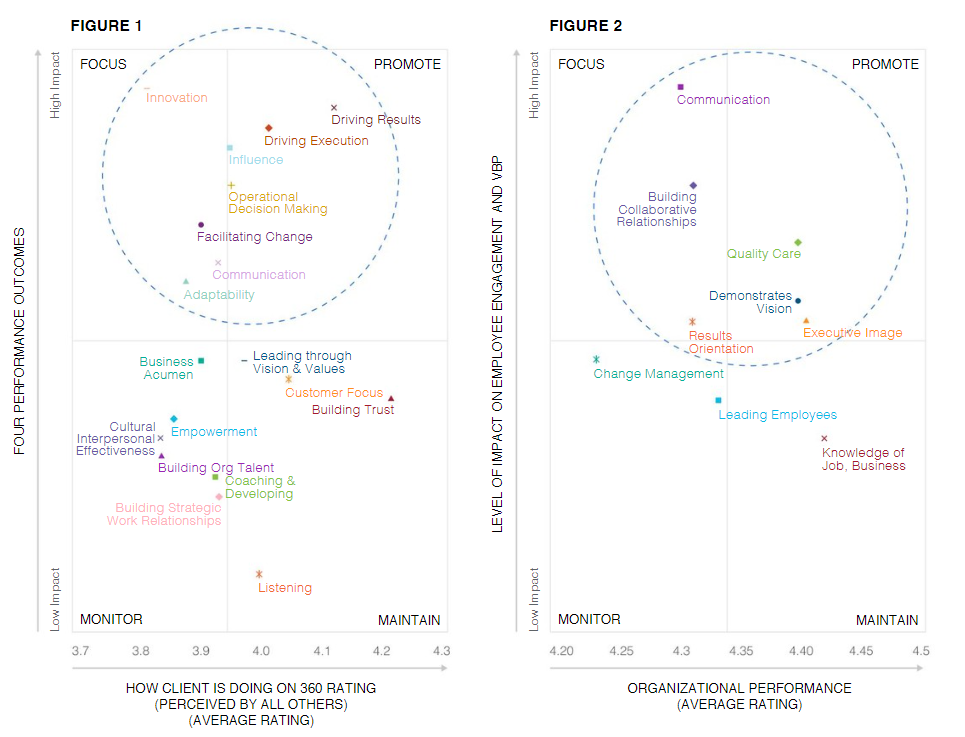There’s a reason organizations use data to make important business decisions: the analytics produces results that benefit the organization. Whether it’s simply a report that brings together existing data to assess progress or predictive analytics using that data to understand what is likely to happen in the future, if business leaders want to do their jobs as well as possible, they want to employ analytics however they can.
Often, though, when choosing someone for a leadership position, analytics aren’t a regular part of the process. Organizations spend so much time thinking about how data can improve their bottom line, but they often don’t use that same approach with hiring. Data can tell us about leadership, though, whether that’s hiring someone from outside the organization or looking at potential traits in someone already there. Here’s what data can tell us about being a good leader.
Worth the investment
A company might argue that finding a leader isn’t the reason they’ve spent money on analytics. They might point to time savings or financial benefits that analytics brings about – numbers providing a clear indication that a business intelligence solution is making a difference. But there is data showing it is probably worth sharing that analytics success with decisions about leadership.
However, McKinsey research says there are 20 fundamental components of leadership that correlate closely to organizational performance. In addition, a good leader can be the difference between satisfied employees and workers leaving. And according to Gallup, high turnover rates can cost a company millions of dollars. So for companies looking to analytics to improve their bottom line, employee turnover could be a good place to focus some attention. Finding the right leaders would help turn that number around.

Leadership traits
Just as they do with any other type of data, organizations probably already have information about what makes a good leader, and if they don’t, it wouldn’t be very hard to gather. The difficult part is knowing what to do with the data once it’s collected.
In the case of leadership, research exists showing what traits are desirable in a leader. Organizations can use that information and also survey employees about what they think makes a good leader.
- Employee engagement is a good place to start. The Gallup research shows that engaged employees – a reflection of good leadership – are less likely to leave their jobs.
- Team productivity is another good indicator of leadership. Not everyone displaying favorable leadership skills or personality traits can succeed in every situation, though. How can you use the data to make decisions?
Using data to identify a good leader
An organization must know what it wants to measure in order to assess a leader. There are a few steps that can ensure a company is taking the right approach:
- Identify objectives – The organization needs to know what its goals are. Clearly identifying what the company wants to achieve is an important first step in finding a leader who can accomplish the tasks.
- Collect the data – This is the information an organization will use to assess leadership, whether it is simply through asking employees what kind of leader they want or, if it’s available for internal or external candidates, actual ratings of leadership qualities.
- Analytics – The right analytics solution can boil down the information gathered to guide decision-making.
Training Industry Magazine published a case study of how one North American healthcare system identified which competencies mattered most for the hoped-for business outcomes. The data indicated traits such as:
- Communication
- Building collaborative relationships
- Quality care
- Demonstrates vision
- Executive image
- Results orientation

Source: Training Magazine, July/August 2020, https://www.nxtbook.com/nxtbooks/trainingindustry/tiq_20200708/index.php#/p/24
The organization developed programs aimed at improving those competencies, and saw the metrics improve, resulting in more reimbursement money from the federal government. Its approach focused on improving existing leadership, but the same process could be used in hiring someone new.
Hiring processes are tricky. There’s no one question that can reveal what kind of a leader a person might be when it comes time to act. Every industry can point to examples of someone who was hired being different from how they presented themselves in an interview. Or where the reverse is true – someone didn’t come across in a job interview the way that they actually perform. Or maybe someone with great leadership potential never even made it to an interview. It could be the next great leader is already in the organization that person is destined to lead. Data and analytics could help you identify that individual.
- Summer is an Opportunity for Digital Transformation in Education - April 17, 2024
- Your Car is Tracking More than Miles per Hour - April 11, 2024
- Data Can Help Provide Equal Footing in Cannabis Space - April 3, 2024



